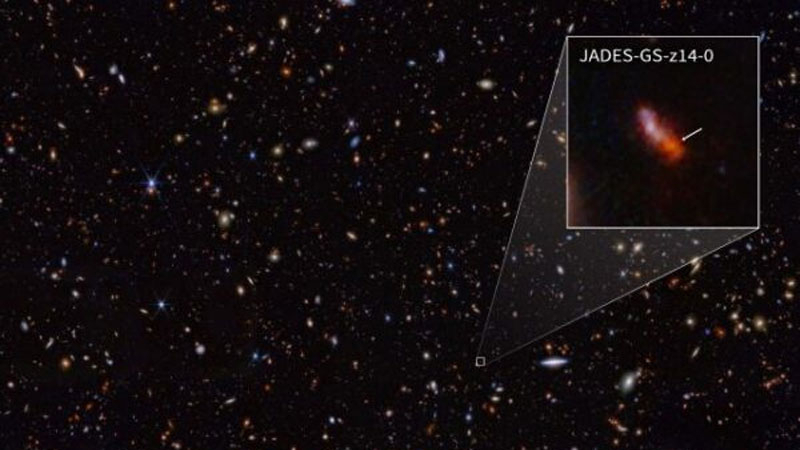The first of three papers was published in the journal Nature, in which scientists reported obtaining convincing evidence of the discovery of the oldest galaxy in the history of observations. Galaxy JADES-GS-z14-0 existed less than 300 million years after the Big Bang. This does not fit the minds of scientists – such large, bright and developed galaxies simply should not have existed in those days.

Image source: NASA
«In January 2024, the NIRSpec instrument observed this galaxy, JADES-GS-z14-0, for nearly ten hours, and when the spectrum was first processed, there was unequivocal evidence that the galaxy did indeed have a redshift of 14.32, which “Breaked the previous record for the most distant galaxy,” explained astronomers Stefano Carniani from the Scuola Normale Supérieure in Italy and Kevin Hainline from the University of Arizona.
NIRSpec near-infrared spectrograph as part of the space observatory named after. James Webb is able to determine the redshift of an object by filtering out, for example, waves of the same range of natural origin – from chemical and physical processes in stars. Only after a spectral analysis of an object, for example a galaxy, can a conclusion be made about its remoteness. After this analysis, the JADES-GS-z14-0 galaxy is determined to be the oldest (or youngest, depending on where you count from) in the history of observations.
The extent of the JADES-GS-z14-0 galaxy is estimated to be at least 1600 light years. This suggests that the light mainly comes from young stars, rather than from the massive black hole at its center. The mass of the galaxy exceeds several hundred million solar masses. This is approximately 10% of the mass of our Milky Way galaxy. It would seem like a small thing. But this “trifle” was precocious during the Dawn of the Universe, when galaxies of this size and mass should not have existed.
«James Webb” gave us a glimpse into a time when the Universe was shrouded in a fog of atomic hydrogen, scattering visible light and preventing scientists from peering back into time. What was learned there challenged earthly science. The dynamics of the evolution of stars and galaxies has exceeded all theoretical calculations. The JADES-GS-z14-0 galaxy, for example, contains so much dust and heavy elements (in astronomy, anything heavier than helium) that it is impossible to explain today. For this to happen, many generations of heavy stars had to live and die, which seems simply incredible for a time 300 million years after the Big Bang.